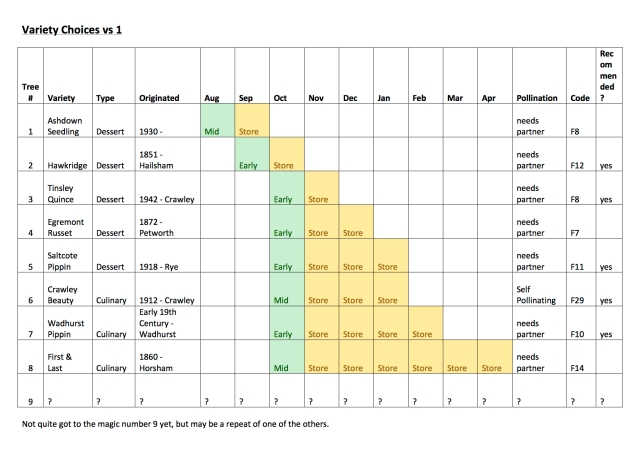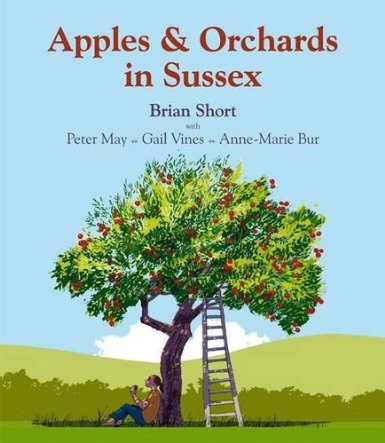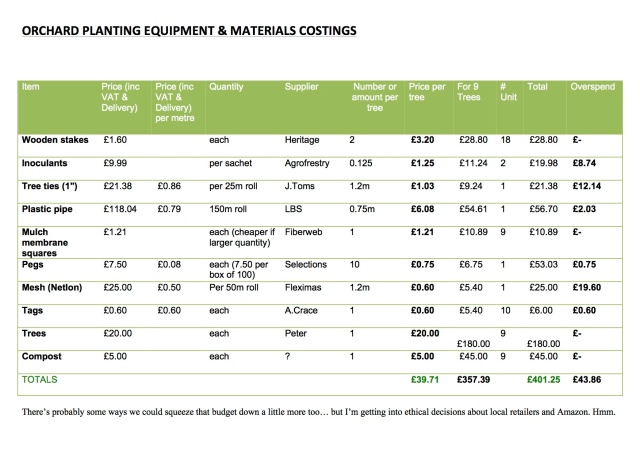I must admit by the time I got to this stage the boundaries between Analysis and Design were so blurred. Analysis seemed to be continual and every bit of it was leading to design decisions. On this blog post alone I think I changed the title from Analysis to Design and Back again a number of times before settling on Design as the basis. The thing is, the choice about apple varieties and purchasing choices are design decisions, so even if the evidence here suggests I’m analysing data, the purpose is to come up with the plan – quite specific.
I had a little fun with analysing potential yield and other Apple Tree specific data that I’d gathered. I used this book to focus on some potential apple varieties for the design and also took advice from an apple specialist (one of the authors of the book, Peter May). The book is also available in all good local book shops.
From Peter’s advice and suggestions and some of my own thinking, I came up with 8 varieties I was interested in for the actual design. Unfortunately, availability won’t be known until August, and so this factor is now included in my implementation plan. I looked at when each variety would come to fruit and harvest and how long each would store for. From all the choices in the book, I was trying to obtain yield that would produce food for as long a period of the year as possible – apples right through the winter! I also checked out whether they were self pollinating or needed a pollinator, and if so, which partner pollinator tree might suit. You can see which ones Peter recommended in each column. The ones I finally settled on for the design were ones which were pollination compatible or self pollinating. 
I thought back to the Ethics and Principles of permaculture when choosing the varieties –
- Choosing local varieties is good Earthcare as they are more resilient to local weather conditions, diseases and pests – in principle, it’s working with nature not against it.
- Peter is the only person grafting some local varieties onto vigorous rootstock, which is what we need for the field, so we get big trees that will provide more protection against deer and rabbits (obtain a yield / Fairshares).
- The larger trees will also grow high enough to be able to plant things under and with them, in time, using forest gardening techniques (Integrate not segregate principle).
- Purchasing via Peter keeps money in the local economy and is keeping a local skill alive (Peoplecare)
- Planting a wide variety of apples is using and valuing diversity. Trying to get the longest storage time out of the range of apples means that the yield goes further (fairshares) and is less intensive to harvest, as they won’t all come at the same time – although October is looking busy! (peoplecare).
Another bit of fun was estimating yields – I got these figures form this website which estimated yield in Kg according to root stock. I then ended up mucking around with the other metrics – they’re guess work really(number of apples / shop value)…
One Interesting thing (PMI analysis!) was for some reason I was looking ahead and thinking, “by the time these come to full fruition, I’m going to be 47! And then I realised just what an investment trees are. These things could be productive until my dying day and could well outlive me, so they’re a real telescope into the future!

I then went on to do some analysis around the cost of the design. I’d given myself a budget of £500. which I had saved up. I wanted to see how far this would go and make design decisions based on my findings.
Using the above calculations I worked out I could probably come in at around £400 for the 9 trees and have some left over resources afterward for future planting. This leaves £100. spare and I needed to think about what best to use this on. I thought the biggest issue on site is water and I hadn’t yet worked out exactly how to maximise this.
So in coming to the design, I figured I could easily scrounge some guttering for the outbuildings but I do need more water vessels than the wheelie bin and the old steel drum that are currently there. I could potentially get a couple of water butts for £100 at the end of the summer season so I’m going to keep an eye out. They would be preferable and as each tree will need a bucket a week, I don’t want to be traipsing up and imposing on Abi’s mum or her water bill – so this is most important.

